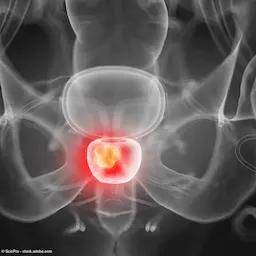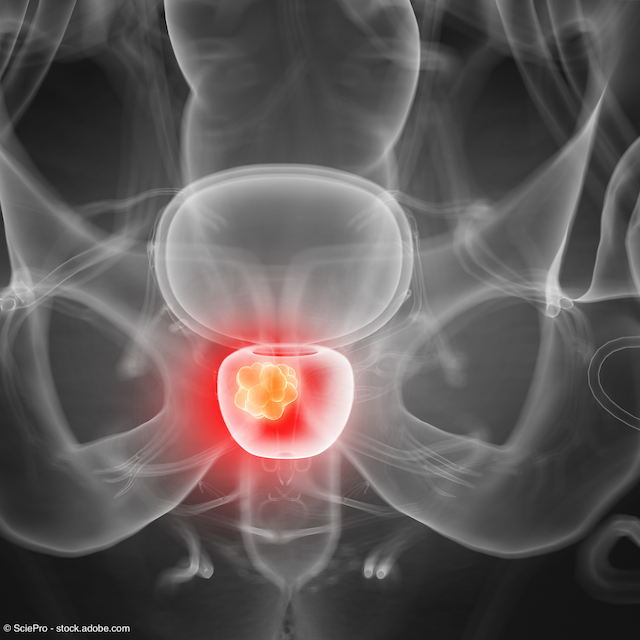News
Article
68Ga-PSMA and 18F-Fluciclovine demonstrate ability to alter radiation target volumes
Author(s):
Key Takeaways
- Ga-PSMA and F-Fluciclovine PET/CT significantly increased radiotherapy target volumes post-prostatectomy, with F-Fluciclovine leading to more prostate bed boosts.
- F-Fluciclovine showed higher prostate bed uptake (88.1%) and boosts (79.7%) compared to Ga-PSMA (48.3% uptake, 45% boosts).
Data from the EMPIRE-2 trial also showed that 18F-fluciclovine resulted in significantly more boosts to the prostate bed.
Both 68Ga-PSMA and 18F-Fluciclovine (fluciclovine) PET/CT integration modestly, but significantly, increased radiation target volumes, with 18F-fluciclovine resulting in significantly more boosts to the prostate bed, according to data from the phase 2 EMPIRE-2 trial (NCT03762759) presented at the 2024 American Society for Radiation Oncology Annual Meeting in Washington, DC.1
Vishal R. Dhere, MD

The results were presented by Vishal R. Dhere, MD, an assistant professor of radiation oncology at Emory University in Atlanta, Georgia.
Dhere began by providing an overview of findings from the EMPIRE-1 trial (NCT01666808), which demonstrated that 18F-fluciclovine-guided radiation following prostatectomy improved 3-year failure-free survival (FFS), with a rate of 75.5% compared with 63% with conventional imaging (P < .01).2 Specifically, at 3 years, there were 15 event-free survival events in the 18F-Fluciclovine arm vs 27 events in the control arm (HR, 1.84; 95% CI, 0.98-3.47; P = .0540).
According to Dhere, these findings suggest that “potentially, fluciclovine did more than just improve patient selection.”
He also noted that since the presentation of results from EMPIRE-1 in 2020, several additional radiotracers have been approved in the setting of re-staging patients with biochemical recurrence following prostatectomy, including 68Ga-PSMA-11.
Thus, the prospective EMPIRE-2 trial sought to compare changes in radiotherapy target volume and acute toxicity between 68Ga-PSMA and 18F-Fluciclovine PET/CT. In total, the trial enrolled 140 patients, with 70 patients allocated to each arm. Clinical characteristics were well balanced between the 2 arms.
Overall, data showed that PET target volumes were significantly altered with both 68Ga-PSMA and 18F-Fluciclovine.
In the 18F-Fluciclovine arm, the mean prostate bed CTV was 115.20 cc pre-PET and 115.75 cc following PET (P < .01). Pelvic nodal CTV also increased from 469.73 cc prior to PET to 472.73 cc following PET (P < .01).
Similarly, in the 68Ga-PSMA arm, the mean prostate bed CTV was 121.2 cc prior to PET compared with 121.4 cc after PET (P < .01). The pelvic nodal CTV also increased from 465.80 cc prior to PET to 466.80 cc following PET (P < .01).
The investigators also noted that significantly more patients in the fluciclovine arm received prostate bed boosts.
In the fluciclovine arm, prostate bed uptake was observed in 88.1% of patients (52/60), and 79.7% (47/60) received a prostate bed boost. Comparatively, in the 68Ga-PSMA arm, prostate bed uptake was observed in 48.3% of patients (29/60), and 45.0% (27/60) received a prostate bed boost (P < .01).
The authors also noted, “All patients met rectal V65Gy<35%; 5 patients in each arm exceeded bladder-CTV V65Gy<40%.”
Acute GU or GI toxicity, defined as less than 90 days from the end of radiation, were not statistically significant between the 2 cohorts. There was a numerical difference between the 2 arms regarding grade 2 acute GU toxicity, with 10 patients (16.95%) in fluciclovine arm experiencing an event vs 4 patients (6.67%) in the 68Ga-PSMA arm. However, the difference did not reach statistical significance.
Overall, the authors noted that acute GU toxicity was mild and no greater than what was observed in the EMPIRE-1 trial.
The EMPIRE-2 trial remains ongoing to assess biochemical control, late toxicity, and patient reported outcomes. In his concluding remarks, Dhere added that assessment of 2-year FFS, the EMPIRE-2 trial’s primary end point, is forthcoming.
References
1. Dhere VR, Schuster DM, Goyal S, et al. Volumetric changes and acute toxicity with 68Ga prostate-specific membrane antigen vs 18F-Fluciclovine PET/CT guided post-prostatectomy radiation: Final analysis of a randomized trial. Presented at: 2024 American Society for Radiation Oncology Annual Meeting. September 29-October 2, 2024. Washington, DC. Abstract 318. https://www.redjournal.org/article/S0360-3016(24)00987-8/fulltext
2. Jani AB, Schreibmann E, Goyal S, et al. 18F-fluciclovine-PET/CT imaging versus conventional imaging alone to guide postprostatectomy salvage radiotherapy for prostate cancer (EMPIRE-1): a single centre, open-label, phase 2/3 randomised controlled trial. Lancet. 2021 May 22;397(10288):1895-1904. doi:10.1016/S0140-6736(21)00581-X















